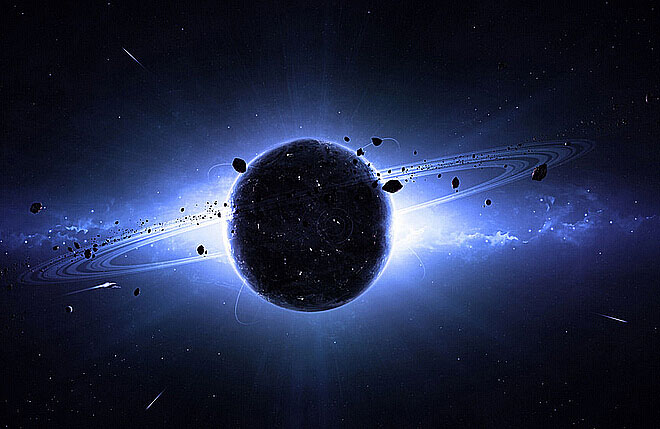The results were so unexpected, in fact, that the three scientists at first thought they had to be wrong. The amount of iridium in the Alvarez sample was more than three hundred times normal levels—far beyond anything they might have predicted. Over the following months Asaro and his colleague Helen Michel worked up to thirty hours at a stretch ("Once you started you couldn't stop," Asaro explained) analyzing samples, always with the same results. Tests on other samples—from Denmark, Spain, France, New Zealand, Antarctica—showed that the iridium deposit was worldwide and greatly elevated everywhere, sometimes by as much as five hundred times normal levels. Clearly something big and abrupt, and probably cataclysmic, had produced this arresting spike.
实际上,结果完全出人意料,三位科学家起先以为自己错了。阿尔瓦雷斯的样品里铱的数量竟然超过通常水准300多倍──远远在大家的预料之外。在此后的几个月里,阿萨罗和他的同事海伦·米歇尔经常一口气工作达30小时(“一旦开始,你就停不下来。”阿萨罗解释说),分析样品,总是得出同样的结果。他们还测试了来自别的地方──来自丹麦的、西班牙的、法国的、新西兰的、南极洲的──样品。结果表明,铱的沉积是世界性的,数量到处都很大,有时候多达通常水准的500倍。显然,突然发生过什么大事,很可能是灾难性的事,才产生了这样令人瞩目的示踪同位素。

After much thought, the Alvarezes concluded that the most plausible explanation— plausible to them, at any rate—was that the Earth had been struck by an asteroid or comet.
经过反复思考以后,阿尔瓦雷斯父子得出结论,最说得通的解释──反正在他们看来是说得通的,是一颗小行星或彗星撞击了地球。
The idea that the Earth might be subjected to devastating impacts from time to time was not quite as new as it is now sometimes presented. As far back as 1942, a Northwestern University astrophysicist named Ralph B. Baldwin had suggested such a possibility in an article in Popular Astronomy magazine. (He published the article there because no academic publisher was prepared to run it.) And at least two well-known scientists, the astronomer Ernst Opik and the chemist and Nobel laureate Harold Urey, had also voiced support for the notion at various times.
地球有时会遭到破坏性极大的撞击,这种看法并不像现在有时候会觉得的那么新鲜。早在1942年,西北大学的天文学家拉尔夫·B·鲍德温已经在《通俗天文学》杂志上的一篇文章里提出了这种可能性。(他的文章之所以发表在这本杂志上,是因为没有哪个学术出版社愿意经营这类杂志。)至少有两名科学家──天文学家恩斯特·奥皮克和化学家、诺贝尔奖获得者哈罗德·尤里──也在不同的时刻对这种见解表示支持。













